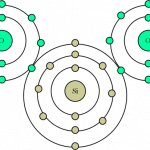Recently in Scimatics we finished up a unit on matter cycles. During this blog post I’ll be taking you through my learning process and some activities we did along the way. I’ll also focus on some core competencies I felt I excelled on during this project.

Starting off this unit I didn’t know too much about matter cycles. Obviously I had learned bits and pieces about the water cycle, but the carbon, nitrogen and phosphorus cycle were all very new to me. I didn’t really understand them at first and hardly knew anything about the nitrogen or phosphorus cycles.
My group, which was just Izzy and I, completed a few khan academy exercises about the material and then we were tasked with making a project about the nitrogen cycle.
But, before this, we went through a debate on which cycle deserved the most attention and what we can do about it. There was 4 of us representing the nitrogen cycle and I think it’s fair to say we gave it a run for the title. In the end, the water cycle out-debated us, but my team left the debate with some funny memories including the phosphorus’ team first round disaster. Some *interesting* judging and we lost in the finals, but it is what it is. I really enjoyed this debate because it gave everyone a chance to have a day in it and participate in the class.
For our main project, we had to identify a problem with the nitrogen cycle and suggest a solution by creating a presentation of sorts. Izzy and I decided to focus on farming fertilizer. It’s used to grow plants and most people think it doesn’t really have negative impacts on the environment except for the chemicals in it. Well, the people aren’t wrong. There is lots of nitrogen being used in these farming fertilizers. This is completely throwing off the nitrogen cycle. So many nitrites and nitrates (which is usable nitrogen) is being overused in the farming fertilizers. It also has negative effects on the water cycle because when runoff occurs, it brings some of these chemicals with it. This leads to bad things such as algae blooms happening. Algae blooms can completely kill all life from an area.
This is clearly not ideal.
Below are some of the core competencies that I feel Izzy and I performed well on throughout the project
- Make observations aimed at identifying their own questions, including increasingly complex ones, about the natural world.
So for our project Izzy and I asked, “How can we make a plant that can survive without nitrogen? Now after doing some research we realized all plants need it one way or another. However we could find out what types of bacteria allowed plants to use much less, and even better how plants could take nitrogen straight from the atmosphere. We decided to make something called…. (drumroll) The Super Bacteria!
- Communicate scientific ideas, claims, information, and perhaps a suggested course of action, for a specific purpose and audience, constructing evidence-based arguments and using appropriate scientific language, conventions, and representations
Since we are two grade 9 kids with very very limited access to scientific bacteria or any of the right equipment, we couldn’t actually make our own bacteria but what we could do research and find out exactly how it would or could be done. For this to work we would only need 2 species of bacteria, cyanothece and a non-nitrogen fixing bacteria (we decided on Synechocystis). The cyanothece bacteria is quite unique since it photosynthesizes during the day but waits until nighttime for nitrogen fixation. This means if we could transfer some of those genes into non-nitrogen fixing bacteria that we could produce more usable nitrogen and we would be able to use less fertilizer.
- Use knowledge of scientific concepts to draw conclusions that are consistent with evidence
After doing some research we found that at the university of Washington a similar experiment was done using cyanothece and Synechocystis. In this experiment they took away all nitrogen stored in the Synechocystis and out 24 of cyanothece’s genes into it. After doing this it fixed oxygen at a 30% better rate. To demonstrate our learning in an easy and understandable way we made a simple animation to demonstrate the genes transferring. The animation:
- Consider the role of scientists in innovation
In our project scientists would be extremely important. For this to work in the real world they would have to perfect the the transfer and the whole process in general. When making this we tried to act as scientists as well. We took a very serious attempt at finding a way to solving this problem and I’m happy of how deep in investigating we went on this topic.
I think this project went really well for our team. I feel we worked quite well together and I learned lots about the nitrogen cycle.
Nik








